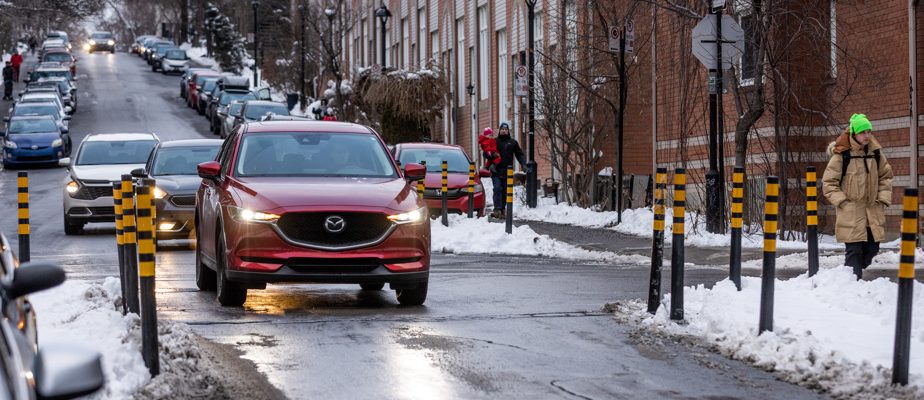Every year, hundreds of children are hit by motorists in the metropolis, largely in school zones. In a new report, the Montreal Regional Public Health Department (DRSP) considers that it is more necessary than ever to “reduce the role of the automobile”, particularly around educational establishments.
“We really advocate keeping cars as far away from school zones as possible. We must secure the entire route to the school, seeing the school as the heart of the neighborhood that we secure depending on where the young people live,” explains the head of department, environmental health and life course. in urban areas of the DRSP, Anne Pelletier, in interview.
In a report presented before the Transport Commission of the City of Montreal, that The Press obtained, the DRSP reveals that 420 children were slightly injured in 2022. To this toll are added 12 young people aged 0 to 17 who were seriously injured, and 2 who died.
This is a marked increase compared to 2021, the year when there were instead 380 children slightly injured, 8 seriously injured and 2 deaths. In 2020, at the height of the health crisis, barely 200 injuries were recorded.

In short, after a drop in collisions during the pandemic, everything indicates that the trend is starting to rise again, especially since the number of deaths is increasing compared to the last decade. At the end of 2022, the death of little Mariia Legenkovska, hit by a driver while walking to her school in the Centre-Sud district, had particularly marked people’s minds.
Particularly risky arteries
One observation seems clear: it is Montreal’s arteries that pose the most problem. Among 5 to 12 year olds, more than 51% of collisions occurred near one of these major roads. “This is worrying, especially when we know that only between 20 and 30% of schools are located less than 100 meters from an arterial road,” notes Mme Pelletier.
These are roads where there are still many cars and generally higher speeds. However, this is where the City seems to have the most difficulty in implementing arrangements. It’s a shame, because that would be the most profitable.
Anne Pelletier, from the DRSP
Furthermore, among all young people injured since 2013, “between 43% and 52% were traveling on foot or by bicycle at the time of impact”, a proportion which increases to around 78% when we talk about seriously injured people only.
What’s more, a third of young people involved in a collision “were involved during the school term, that is to say between 7 a.m. and 5 p.m. from Monday to Friday, from September to June”, writes the DRSP. And 23% of them were also within the school zone at the time of the incident.

PHOTO MARTIN TREMBLAY, LA PRESSE ARCHIVES
“There is a particular phenomenon in school zones: as soon as the parent does not feel safe letting their child go to school alone, they will often take them by car. But by doing so, it itself intensifies the risk,” recalls M.me Pelletier.
Too much space in the car
Meanwhile, inequalities remain very “significant” in the space granted to motorists, adds the expert.
In Montreal, the space intended for motorized vehicles – in other words, traffic lanes and on-street parking – still represents today “nearly 74% of the total space of the road network,” notes the DRSP. The space reserved for pedestrians is around 19%, while cycling and public transport each occupy around 1%.
As long as the number of cars on the roads continues to increase, we will continue to generate risk at the same time as we apply solutions.
Anne Pelletier, from the DRSP
Mme Pelletier sees this reality as one of the biggest challenges facing cities today. Ultimately, it is therefore “necessary to reduce the role of the automobile in favor of active and collective modes of transportation”, especially in school zones, recommends the DRSP. This calls for the creation of “complete living environments and short distances which have facilities for pedestrians and cyclists ensuring better sharing of the street”.
“It’s as if we’ve gone too far in all-car driving. Today, we need to think and ask ourselves the question: what is the fair share of all modes of transport? And take consistent actions,” concludes the researcher.
What there is to know
More than 430 children were injured in 2022 on Montreal roads, an increase compared to 2021 and 2020.
The Regional Public Health Department is calling on Montreal to reduce the importance of automobiles, especially around school zones.
These are the arteries that must be secured as a priority, according to the organization.
